The Club Behind the Kit: The Making of Venezia's Miracle
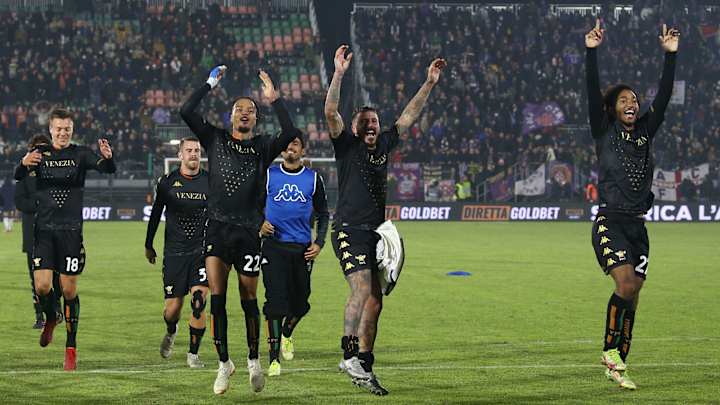
On the island of Murano in the Venetian lagoon, among its color-coded houses and sleepy canals, magicians bend fire and freeze flames. There, artisans pull molten glass like jelly, curling it to their will into something as grand as a chandelier or as precise as a chess piece. For centuries since 800 A.C.E., the magic of glassblowing remained Venice’s best-kept secret.
At the end of the 13th century, right around the same time its native son Marco Polo was paving the Silk Road, the Venetian Republic ordered its glassblowers to the island of Murano, where they were never allowed to leave. Historians tend to agree that the law was enacted to keep its trade secrets from leaving the maritime empire, which, at its height, stretched to Greece. What those artisans created was a miracle of light and alchemy; and one didn’t just give away a miracle.
Venice itself seems like a floating miracle. After all, it is a place where, every day, people walk on water. It’s a future Atlantis framed in gold, as if it were a moving, bustling work of art. And sitting on that miracle at the fringe of an iridescent lagoon, far from the gondolas and the tourist hive, is the Stadio Pier Luigi Penzo, the home of Venezia FC.
It is a fairy tale of a soccer stadium, where opposing players arrive not on a team bus but sleek wooden boats. It’s where a team became a club, as Venetians used to challenge the crews of ships that came into port. It’s also where, in 1970, a tornado that left more than 30 dead razed much of the stadium to the ground.
Forty-one years later, as the club rushed to prepare for its unexpected return to Serie A, Stadio Penzo needed another rebuild of sorts before it could host games in the top flight. The original plan was to have the stadium upgraded by the start of the 2022–23 season. Instead, Venezia’s improbable promotion meant that the club had to install new lights, dressing rooms, piping and plumbing and nearly 4,000 seats in a summer—all by boat since cars, let alone construction trucks, cannot access the island.
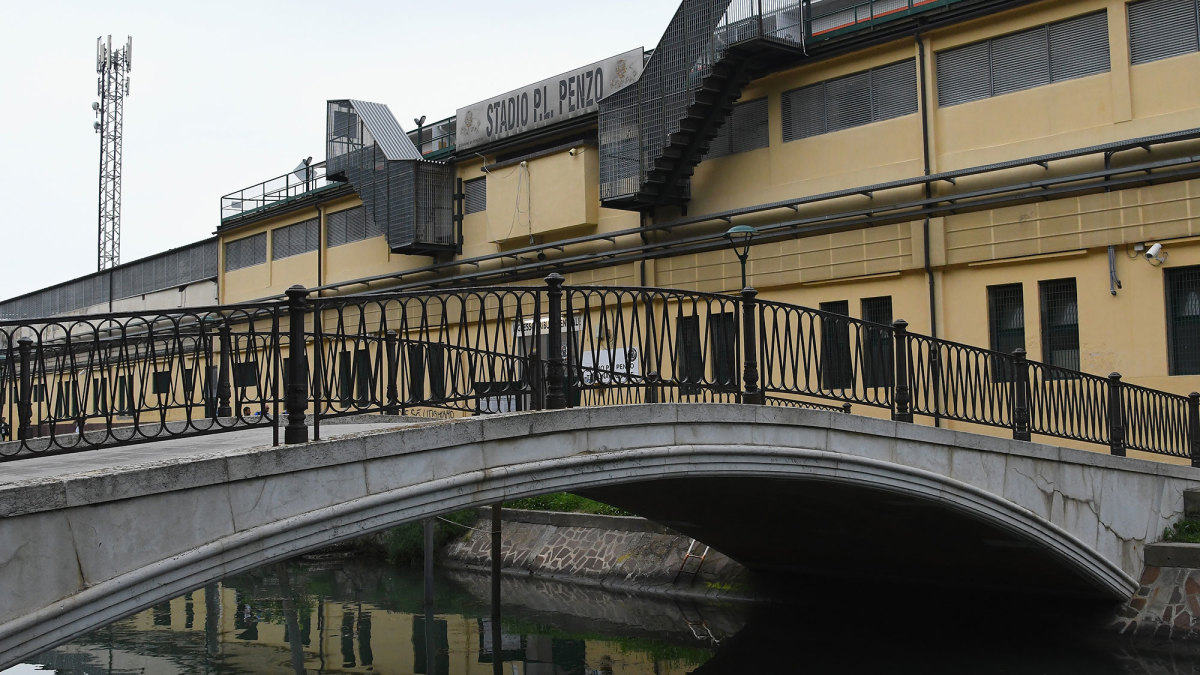
Anyone who knows Italian bureaucracy and construction can tell you what it took to have Venezia playing in the Stadio Penzo right on schedule for its Sept. 19 home opener.
“There are people on our team that essentially pulled off a miracle,” Venezia chief marketing officer Ted Philipakos says. “It’s only fitting because Venice itself is a miracle. None of this stuff is supposed to be here.”
As trite as its usage has become in sports, the word miracle comes up a lot to describe the 114-year-old club that has risen from Serie D to Serie A in the span of six seasons. It has survived a tornado, three bankruptcies in 10 years and the infamous “heist” of half the team.
In July 2002, during the club’s preseason camp, owner Maurizio Zamparini agreed to sell the club after the team was relegated from Serie A for the second time in three years—the last time it would see the top division until this year.
In one fell swoop, Zamparini jettisoned Venezia and acquired Palermo for €15 million. The next day, he chartered a bus from Venezia’s training camp in Pergine Valsugana at the edge of the Dolomite mountains to Palermo’s training base two hours away. On the bus were 12 Venezia players and the club’s coach, adding a new twist to the term “summer transfer.” In what was a Baltimore Colts–like overnight relocation hyped up on espresso and nicotine, “il Furto di Pergine” (The Pergine Robbery) came to haunt Venezia for years to come.
The financial freefall that followed eventually led to the club’s first bankruptcy and relegation into the third division in 2005, which was followed by two more bankruptcies by ’15. That’s when a U.S. ownership group led by New York attorney Joe Tacopina, now president of Serie B side SPAL, took over the club and began its steep climb through the ranks of Italian soccer from Serie D to B in consecutive seasons.
“Il Furto di Pergine” came full circle at the end of the 2018–19 season, when Venezia lost the Serie B playoff and was relegated to the third division. The meteoric rise seemed to be more of a supernova, that is, until third-place Palermo was automatically relegated for financial irregularities. Midway through the season, Zamparini, who had fired more than 40 coaches in his 16 years as Palermo owner, had sold the debt-riddled club for the price of a wood-fired pizza (€10) in 2018, from which the Sicilian club was never able to recover. In the end, after three sales in three months, Palermo’s new owners were arrested after the 10-euro sale was investigated, the club was declared insolvent and it was kicked out of Italian soccer right when Venezia should have been relegated.
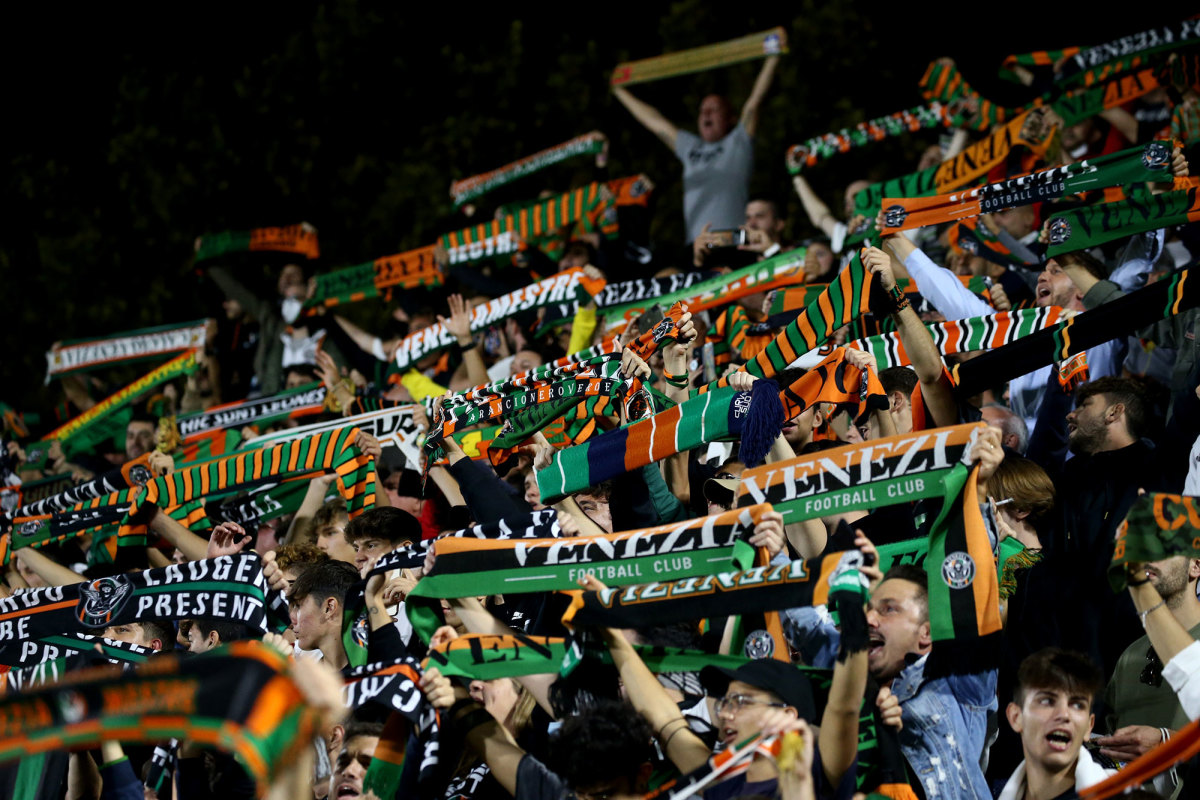
Instead, Venezia was sent back into Serie B, and within a year it would be reorganized from top to bottom with a new president who preaches “family,” a Moneyball philosophy and a marketing team that would turn the brand into a global phenomenon with one of the most viral kits ever made.
What is a miracle but everything falling into place when least expected? Fire frozen into glass. Maybe that is the real story of Venezia FC: the secret of its miracle. But if its success continues, the club’s secret may no longer be kept on the island, much like Murano glass.
When Venezia signed Thomas Henry from OH Leuven in August, director of media Sonya Kondratenko did what the club does for any new signing: She turned the player into a Gucci-esque model.
Rather than a player posing with a thumbs-up next to the club’s sporting director with a fake contract in front of them, Kondratenko, 32, puts Venezia’s new signings on a Renaissance catwalk in the Floating City. What often involves a sightseeing tour across Venice, with lavish backdrops in opulent cafes, Art Deco friezes and snaking canals that inspire wanderlust, a new signing is the center of a photoshoot across one of the world’s most picturesque cities. Henry just happened to be the latest “model.”
While the giant Frenchman isn’t—by a longshot—the most famous T. Henry to wear No. 14, he attracted plenty of attention on that summer afternoon. It wasn’t for the name on the back of his shirt, but for the shirt itself.
“Where did you buy your jersey?” Kondratenko recalls a tourist yelling at Henry during his photoshoot in the iconic Piazza San Marco.
“I’m a footballer!” Henry shouted back. The tourist didn’t care; he only lamented that the club store was sold out.
When the regal home shirt was released at the end of July, it became an international sensation. The rollout featured a Greek model who saw her Instagram following triple by literally being ferried around Venice in the black jersey. Her haunting stare dared you to try to look that good in a soccer jersey, and in the background Venice’s lagoon gleamed, and its marble façades melted into the shirt’s design. On the first day, it sold out—since then, roughly 95% of online sales have come from outside Italy. The shirt was a walking, tackling, selling piece of art.
“We could have very easily continued to do what I think tons of relatively small clubs do: They just take what their technical supplier gives them, and they put their badge on it and ‘project done.’ You’re ready to go,” Philipakos says.
“We had a certain idea that was not traditional. And I think we saw the jerseys as an extra opportunity to tell a story.”

Any historian, tourist or local can recognize the Easter eggs in the shirt if they study it close enough: the cloudy trompe l’oeil texture like a Venetian church façade; the gold stars that mimic those on the dazzling ceiling of the St. Mark’s Basilica; the gold-leaf lion crest that looks like origami made out of a Ferrero Rocher wrapper. It was a canvas waiting to be filled in, and the city provided the best source material.
On an island where more than 55,000 tourists visit every day (in contrast with roughly 50,000 permanent residents), and in an industry where clubs will do almost anything to globalize their audience, it’s easy to see the jersey as another tourist trap. It’s not; rather, it was made as an homage to a city once known as La Serenissima.
“There was a lot of thought put into not just creating something that we believed was fashionable, but something that was authentic to this place, that honored this place,” Philipakos says.
The reality of the jersey is that it would’ve been the home shirt in 2021–22 regardless of what division Venezia played in. The destiny of the jersey is that it coincided with Venezia’s debutante ball on the Serie A stage after a movielike ending to the Serie B campaign: a dramatic, last-minute, promotion-earning goal in last season’s playoffs and a splash into the canal for Venezia FC president and owner Duncan Niederauer.
The process of releasing a jersey—from design to production to wearing it on the pitch—typically takes up to a year of back-and-forth with the supplier and design team (chances are that next year’s shirt is already being finalized). Philipakos, along with creative agency Fly Nowhere, led the shirt from sketches to material to a launch in far less time. As the club was pushing for promotion, the 40-year-old former NYU sports marketing professor oversaw each painstaking detail and led Venezia’s switch to Kappa, the Italian soccer and streetwear brand, which evokes “a certain nostalgia” for the iconic shirts of the 1980s and early ’90s, he says.
“In terms of creating a viral kit, part of it is is a quality care, the launch, the imagery that felt very authentic to the city, like with the launch shots on the water,” adds Mike Maxwell, founder of the Football Shirt Collective, a community marketplace that chronicles the history and fashion sense of soccer jerseys.
“But I think they did an amazing job in marketing it, promoting it and making sure that it was out there. This is quite exclusive. It’s available only in the Venezia store. It’s not in every retailer across the world. It’s very premium. … Almost like nothing we’ve really seen before.”
It’s so exclusive that even players don’t want to give away their jerseys after games. Venezia and U.S. men’s national team midfielder Gianluca Busio jokes that he has a list of people asking him for a home shirt but isn’t even sure if he can manage to procure enough for Christmas gifts.
“I can’t even get one right now. For the game and that’s it,” he says.
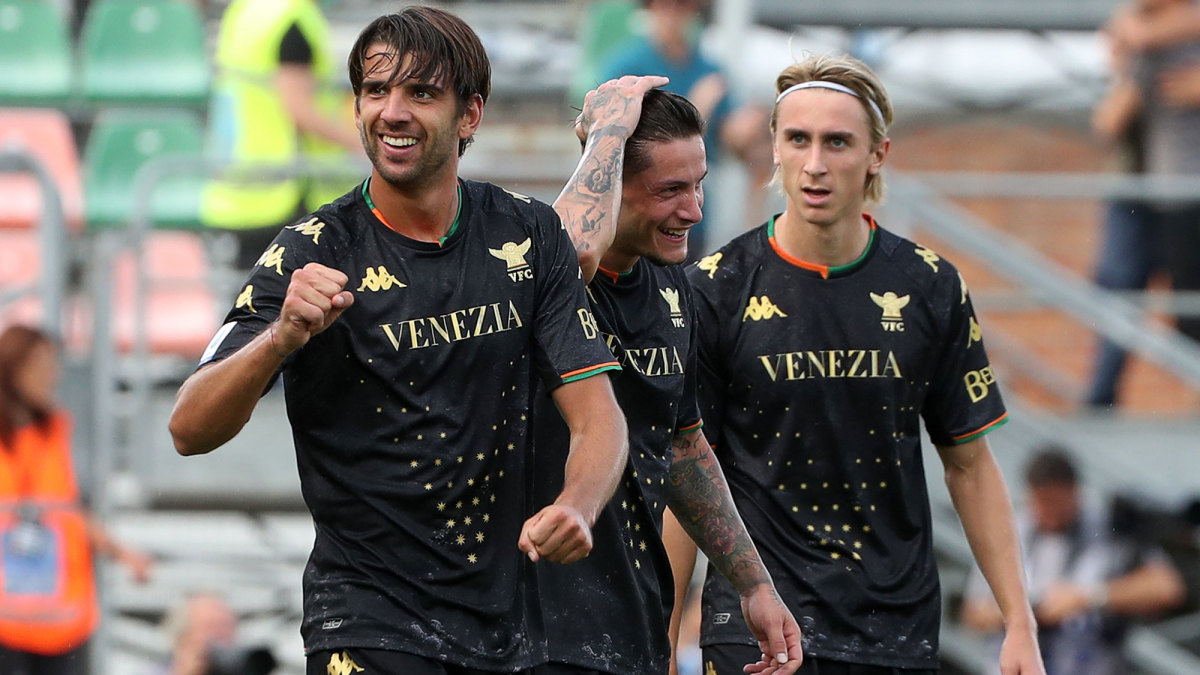
Not that the kit hasn’t encountered problems. Venezia has played most of the Serie A season with a different jersey than the viral shirt its fans wear—one without the club’s crest. League rules state that a club shirt cannot feature two logos, and Serie A judged the text that spells out “VENEZIA” across the chest to be a logo. Thus, barring an unlikely change in the rule or the addition of a sponsor to replace the text, players will go the rest of the season without a badge over their hearts.
Meanwhile, the local fan base hasn’t responded kindly to the home shirts “because they're not orange and green enough,” Niederauer says. The club’s unique colors represent Zamparini’s merger of teams from the island of Venice and the mainland of Mestre: green and black from AC Venezia’s pre–World War II days and orange from AC Mestre. However, the buzz around the shirt has also invigorated a new fan base, one that remains critical to the island and sees its name and jersey being hailed around the world.
“There's a newer wave of 16-year-old Venetian—this is everything they've ever dreamed of,” Kondratenko says. “This is their team that they grew up with, that their family grew up supporting, that is now on the level of a club that they never thought was possible. For them, we’re in Champions League with a jersey like this.”
Before every game, Kondratenko and Philipakos walk the city to feel its magic. The routine typically involves the same route from the Rialto Bridge to San Marco, down Venice’s narrow brick alleys and along the winding canals, to the Stadio Penzo. They usually carry a retro Canon Sure Shot camera with them to capture the miracle of light on film as they cross the city. On matchdays, the duo may seem like a pair of wandering tourists—“how many club CMOs are running around developing film?” Philipakos jokes—but they are on a mission to curate a beloved space. If social media was a museum, then Venezia FC is soccer's MoMA.
Watch Serie A games online all season long with fuboTV: Start with a 7-day free trial!
“Relative to a more traditional time, there's a whole world out there of people that could potentially take an interest in us,” Philipakos says. “And the way they might take an interest in us is not as traditional as watching 90 minutes of a football match. It could be simply following us on social media, it could be through the jerseys.
“The overwhelming majority of these people, maybe all of these people, are never coming to Venice, or never coming to Stadio Penzo. But it doesn’t take away that there’s a relationship happening here. There’s a community developing here. There’s an exchange happening here.”
With so much fanfare, the club’s viral status can push it one of two ways: into the vaunted limelight as an international powerhouse or into the niche underground as a hipster club. What ultimately determines which direction the club takes is the result on the field. Venezia was already a trailblazer in one area; it wasn’t about to stop when it crossed the touchline.
In February 2020, just before the first discovered case of COVID-19 in Italy, Alex Menta bought a ticket at the Stadio Penzo to see Venezia in action as it struggled to stay afloat in Serie B. While in the stands, watching over the players whose futures he would eventually direct, he received a text from his father saying that Niederauer was taking control of the club from Tacopina.
Menta, who was dabbling as a day trader in the stock market, thought there had to be someone in his orbit who had the email of the former CEO of the New York Stock Exchange. Instead, as he sat at a canal-side café with his girlfriend, he found a random email address on Google and sent his ideas into the ether.
“I just remember the last line was like: ‘You probably won’t respond, but I just want to let you know I’m a big fan of yours and I'm excited for somebody with your type of pedigree and standing in the world will take over the club,’ " Menta says.
Within half an hour, Menta was on the phone with Niederauer drawing a roadmap of the underexplored frontier of soccer analytics. While Moneyball tactics had almost become oversaturated in baseball and across U.S. sports, Europe’s old guard had largely proved either too bull-headed or too disinterested in data analytics in the beautiful game. Menta’s hope was to turn it into a bull market.
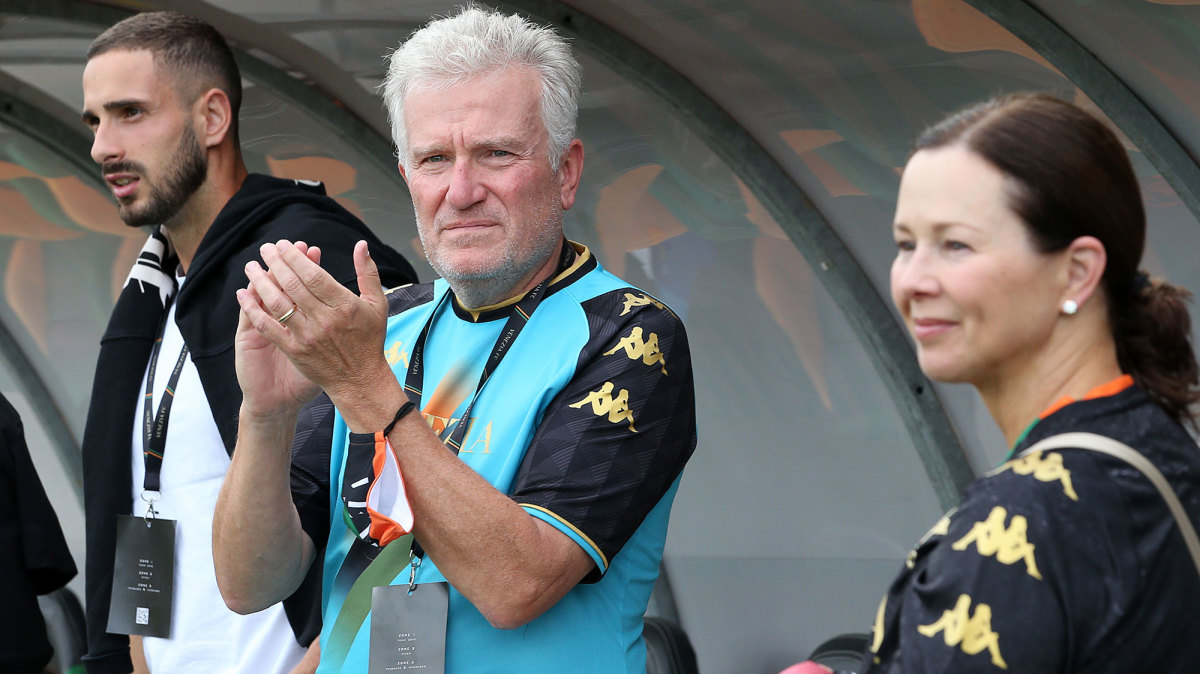
For years in his free time, Menta had developed his own data sets so he could plug players into his model in real time, and he found a Reddit community of “nerds who love what we're doing and just crave more.” Soccer had consumed his life since living in Europe as a professional hockey player—“100 pounds ago,” he jokes. While in Germany, he attended the 2006 World Cup, which Italy won, and the beauty of the game took hold of him.
“I just remember going home like, ‘I want that feeling again,’ ” Menta says.
The Pennsylvania native, whose grandparents are from the Veneto region, was so entranced by the sport that he’d be unable to sleep at night. Instead, he’d watch an Australian League game at 3:30 a.m., chase it with an early Premier League kickoff, follow Serie A games and the midafternoon La Liga fixtures and then finish his night with the MLS slate.
By the spring of 2020, as Serie A took a 10-week pandemic hiatus, weekly calls with Niederauer evolved into daily calls, and daily calls became a transatlantic flight and a permanent move. Within five months of shooting his shot, Menta no longer needed to purchase a ticket to get into the Stadio Penzo.
Before the pandemic, Venezia was hovering around the relegation zone, less than a year removed from being spared of the drop by Palermo’s mismanagement. Once the season resumed in June, which gave Niederauer three more crucial months to plot the club’s new course, Venezia went on its best run of the season, taking points from eight of the final 10 games to avoid relegation and stay in Serie B. From there, Menta and Niederauer went to work with a red pen.
Along with bringing in Philipakos and Kondratenko for their second stints at the club, Niederauer brought in a new technical director, sporting director and manager (former Torino midfielder Paolo Zanetti) who all believed in a more data-driven approach. Meanwhile, Menta was given the title of director of analytics as he put his model to work during his first transfer window. There was no turning back—Niederauer and Venezia were all in.
"We’re gonna sink as a family or we’re gonna fly as a family,” Menta says.
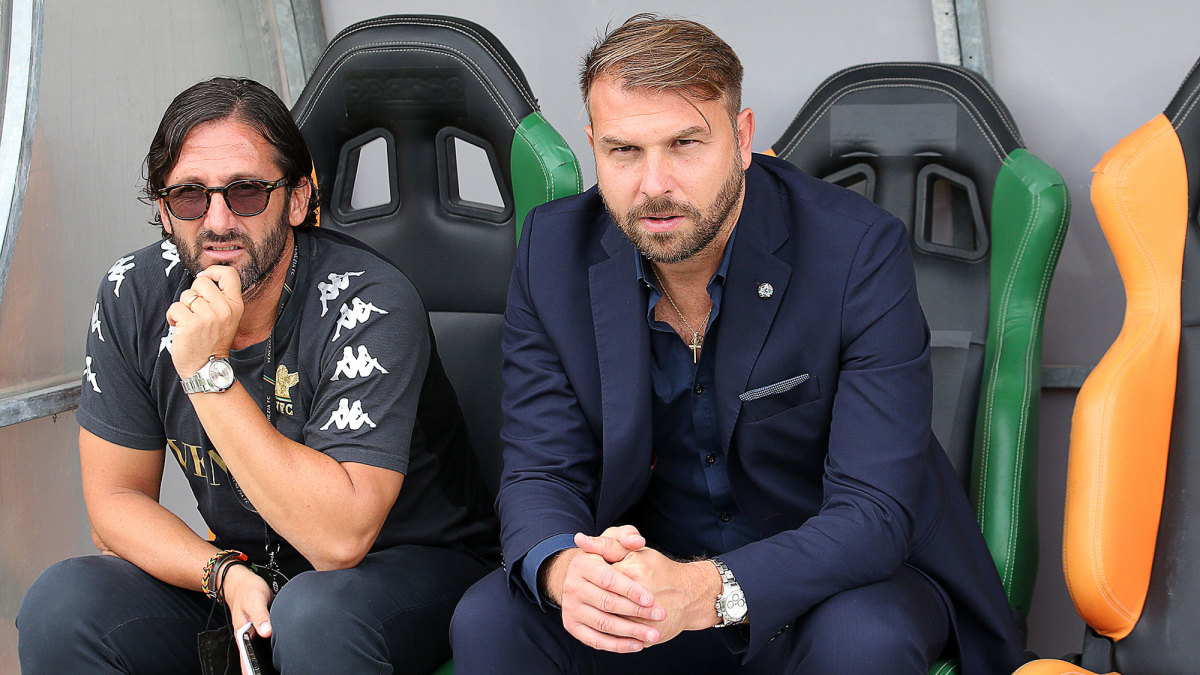
But Menta claims the biggest assist of his first season came from the same online community that helped pique his interest—and even from analytics gurus at other clubs around the world. When Venezia’s starting goalkeeper went down with an injury last February, Menta needed to find a replacement. He reached out to his analytics friends at clubs across the U.K., Scandinavia and the U.S. on their analytics WhatsApp group, and they went to work on finding Venezia a goalkeeper that could help its push for promotion. "I need a goalkeeper. Here's my budget,” the message read.
“I think it's probably one of the biggest unknowns in the football world,” Menta says. “Somebody at a big club who's buying €50 million players, that gets kind of boring after a while, right? Like, what analytics are you really running? … They were just so excited to try to find a needle in a haystack.”
Menta and the group landed on Niki Mäenpää, Finland’s former No. 1 who would end up starting the club’s final 11 games on its improbable climb to the top flight.
It’s almost inconceivable to imagine employees of different clubs collaborating to find a player for another team. Menta says it stems from the camaraderie they’ve built by being the vanguard in an industry under constant assault in soccer.
“I think that’s the main ingredient where it’s got us to kind of stick together a little bit,” he says.
But with Venezia’s rise into Serie A, Menta’s responsibilities have also reached another tier. In every way but his title, he has become the club’s de facto GM. In his first job in soccer, the 30-year-old negotiates transfer fees and contracts with agents and clubs and discusses gameday strategy with the club’s manager.
He also meets with the families of young players hoping to convince them to join Venezia. That included Dabo Swinney this summer when the Clemson football coach showed up for the then-club-record signing ($4.1 million, plus add-ons) of his godson, Tanner Tessmann from FC Dallas.
And leading up to matchday, Menta says he sends each player a text with a personalized gameplan on how to attack their opponents’ specific weaknesses based on the data. It’s a hands-on approach that is far from the norm in Europe’s top five leagues, and it helped earn the club promotion “a little early.”
It’s not all rosy for Venezia. The club is still expected to be in a relegation fight this season. But Menta may have learned his lesson from trying to predict the club’s promotion-relegation chances. After all, his model said there was a 0.5% chance for promotion to Serie A a year ago.
“I’m not gonna pretend like I thought we were going to Serie A,” Menta laughs. “I was the ringleader of ‘there’s no chance.’ ”
When Busio walked into the San Siro on Sept. 22 before a match against AC Milan, he couldn’t help but peek his head into the Inter Milan dressing room. The 19-year-old grew up an Inter fan thanks to his father, who moved from Italy to North Carolina for work right around the same age as when the midfielder moved to Italy.
“It was a kind of a rush,” Busio says. “Everything just kind of hits you and you’re just going out there, and it’s one thing to go watch a game in a stadium that you've dreamt about, but to play in one is a completely other level.”
His father’s family still lives in San Zeno Naviglio, a one-church town of roughly 5,000 outside of Brescia that was once a part of the Venetian Republic. “My Italian is better than their English.”
How good is his Italian? “Not great,” he adds with a smile.
Busio remembers going to Italy every summer to see his grandmother, where “every meal was amazing.” His older siblings would translate so he could speak to her, so when he moved to Venice it made sense for his brother, a former UNC Greensboro midfielder, to come too. Like Menta, Busio says he “found my passion in the game” while in Italy watching Gli Azzurri win the 2006 World Cup.
“I have pictures of me and my brother with face paint, in Italy jerseys, and I just remember when they won, the streets were going crazy,” Busio says. “That's when I first kind of got the experience that this is what soccer can bring to the country.”
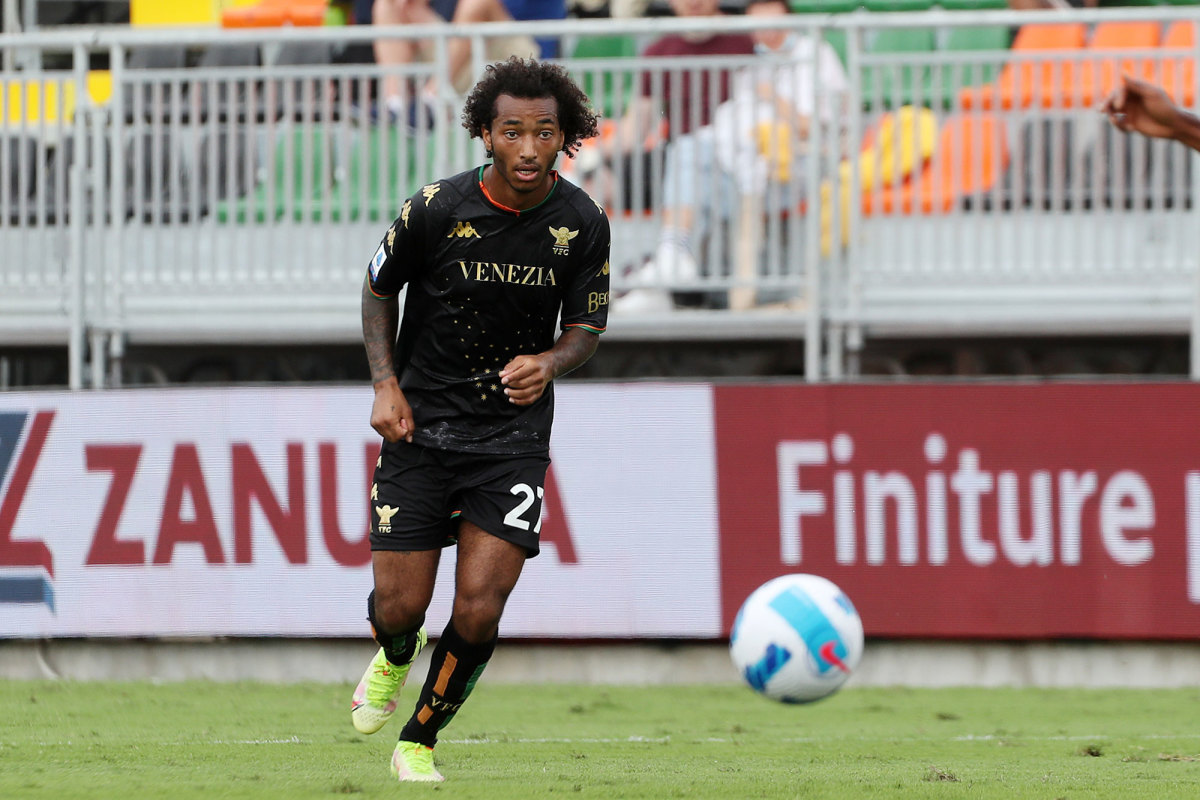
Since then, Italy and Serie A have been on his mind, especially after he excelled at Sporting Kansas City. Busio, with his soft Southern accent, speaks with the calm of an elder statesman, as if Italy was always his destiny. “It was always in the back of my mind that I would end up in Serie A,” he says.
Busio is where all of Venezia’s philosophies meld. It’s why Venezia made him the most expensive transfer in club history ($6 million, worth reportedly up to $10.5 million if incentives are hit). He has the poise on the ball, spatial awareness and work rate to succeed in Italy. As a USMNT midfielder with global appeal, Busio also has a chance to become the international star Menta thinks he can be. And, looking at his introduction video, he could probably stand in as a model for the club’s next jersey launch.
“There’s just something about his brain,” Menta says. “He’s just such a chill kid. … In Italy the speed of which your brain is moving, your calmness and technical abilities—those three are the basics for immediate success [in soccer]. And he’s got it.
“I think he has something huge on his horizon.”
When Menta first arrived at Venezia, Niederauer asked him for potential transfers who excelled in his model. Busio was at the top of his list after Menta watched him score the U.S.’s only goal at the 2019 U-17 World Cup.
“I was just watching at that point, just to see who's interesting, you know, like taking notes on players I wanted and I was like, ‘Stop the video. Who is this kid?” Menta says, just days before Busio scored his first Serie A goal against Cagliari to earn the club a point.
“Small, not physical, but everywhere. … I was obsessed. When you get matches all the way through [the data model], you know, it’s a special player. So when we’re asking for the amount of money that we asked for, I have never been so confident in that.”
Before arriving in Italy, Busio said he “studied” the club’s Instagram to see what life was like in Venice, but his introductory photo shoot still caught him off guard. As he rides a boat through Venice like a scene from a James Bond trailer, Busio sips espresso and poses in the home shirt beneath exposed brick façades that scatter the city. But there might have been some acting involved. He admits to not liking coffee; he prefers gelato after meals and sugary peach tea after games. It’s then that you remember he’s still a teenager with the entire world ahead of him.
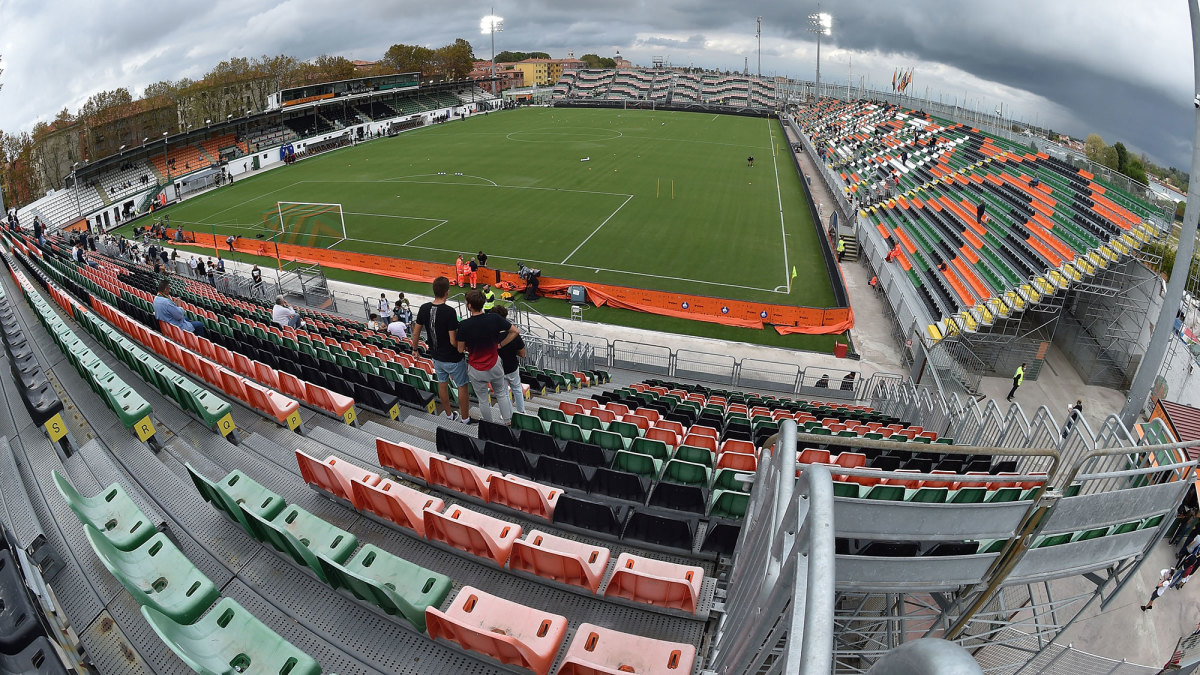
The day after the 1–1 draw with Torino at the end of September, Niederauer arrives at Venezia training with one thing on his mind. As he walks in, Niederauer salutes the drifter who’s taken it upon himself to watch the players’ cars in the parking lot—the only day the man wasn’t there to stand guard last season, he claims, a car was broken into.
As Niederauer moves through the training ground, also under construction given the Serie A windfall, and past the makeshift COVID-19 testing tent, he shakes hands and hugs players. But he is frantically searching for right back Pasquale “Paco” Mazzocchi, and no one knows why.
“Where’s Paco? Have you seen Paco?”
In the end, it had nothing to do with the 90 minute-shift Mazzocchi put in against Torino—Niederauer just really needed a haircut, and Mazzocchi is the unofficial team barber.
“I think they sold me on it, how they treat the players, and that it was kind of a family aspect and how close-knit they are,” Busio says. "I think that was something that I knew I needed just to make it easier to transition to another league and another continent.”
Being around the club, the word “family” comes up often—daily, even. Niederauer preaches it, and it cascades through the ranks. In Serie A, there are now six other clubs (Roma, AC Milan, Fiorentina, Bologna, Spezia, Genoa) with North American owners. But it is difficult to imagine any functioning quite like this.
In almost every team setting, Niederauer is wearing Venezia gear. At games, he doesn’t wear the new kit, but the old hooped one with which Venezia won promotion last year.
“I tell the players almost almost every time I’m with them: I work for them, they don’t work for me,” Niederauer says. “Our job is to put you in a position to succeed. And then we only ask you to play.”
Niederauer, who lives part of the year in Tuscany, stays on the field after every game as the players warm down, to the point where security has to ask him to leave. After the Torino draw, he stands there alone, taking in the Stadio Penzo. A taxi boat awaits outside the stadium and the meter is supposedly running, but he won’t leave until he thanks every player as they walk off the field.
He and Menta eventually board the water taxi, and it whisks them away into the Venetian night. But Philipakos and Kondratenko prefer to walk. At midnight, the narrow streets are all theirs, and the water is still. Under the moonlight, when Venice shines and the tourists ebb, you can hear its miracle speak.
More Soccer Coverage:
- U.S.'s Busio Rescues Point for Venezia With First Serie A Goal
- Venezia Signs U.S. Midfielder Tessmann From FC Dallas
- Salah's Wondergoal Underscores His Impeccable Form
Sports Illustrated may receive compensation for some links to products and services on this website.
